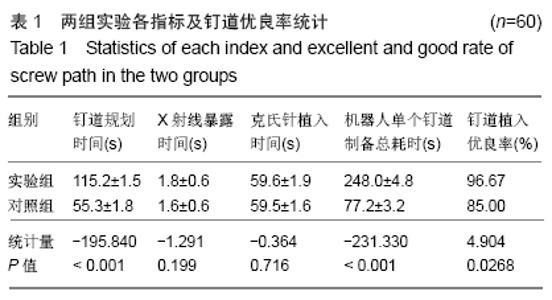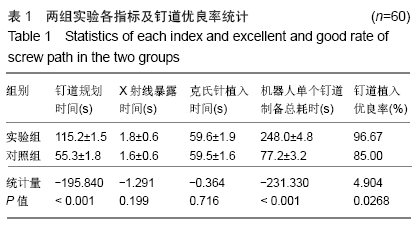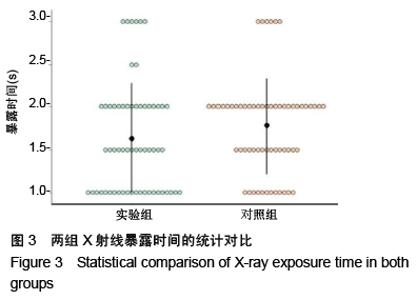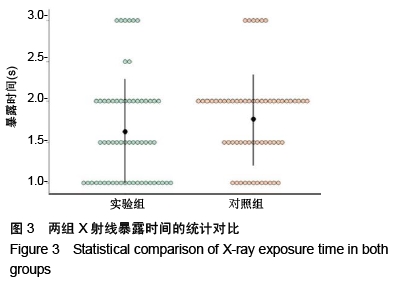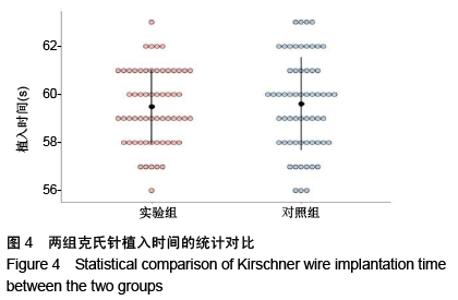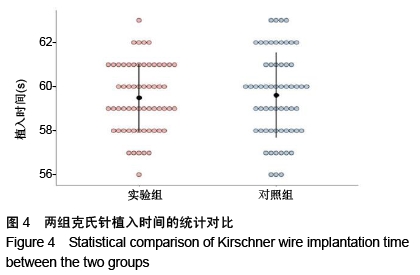[1] LEAL GHEZZI T. Campos Corleta O30 Years of Robotic Surgery.World J Surg.2016; 40(10):2550-2557.
[2] KWOH YS, HOU J, JONCKHEERE EA, et al. A robot with improved absolute positioning accuracy for CT guided stereotactic brain surgery.IEEE Trans Biomed Eng. 1988; 35(2):153-160.
[3] PAUL HA, BARGAR WL, MITTLESTADT B, et al. Development of a Surgical Robot for Cementless Total Hip Arthroplasty.Clin Orthop Relat Res.1992;(285):57-66.
[4] SAUTOT P, CINQUIN P, LAVALLEE S, et al. Computer assisted spine surgery: A first step toward clinical, application in orthopaedics//International Conference of the IEEE Engineering in Medicine & Biology Society.IEEE,1992.
[5] MOLLIQAJ G, SCHATLO B, ALAID A, et al. Accuracy of robot-guided versus freehand fluoroscopy-assisted pedicle screw insertion in thoracolumbar spinal surgery.Neurosurg Focus.2017;42(5):E14.
[6] SCHATLO B, MOLLIQAJ G, CUVINCIUC V, et al. Safety and accuracy of robot-assisted versus fluoroscopy-guided pedicle screw insertion for degenerative diseases of the lumbar spine: a matched cohort comparison.J Neurosurg Spine.2014;20(6): 636-643.
[7] DREVAL ON, RYNKOV IP, KASPAROVA KA, et al. Results of using Spine Assist Mazor in surgical treatment of spine disorders.Zh Vopr Neirokhir Im N N Burdenko. 2014;78(3): 14-20.
[8] 王成勇,谢国能,赵丹娜,等.医疗手术机器人发展概况[J].工具技术,2016,50(7):3-12
[9] 张鹤,韩建达,周跃.脊柱微创手术机器人系统辅助打孔的实验研究[J].中华创伤骨科杂志,2011,13(12):1166-1169.
[10] TIAN W, HAN X, LIU B, et al. A Robot-Assisted Surgical System Using a Force-Image Control Method for Pedicle Screw Insertion. PLoS One.2014;9(1):1-9.
[11] LAVALLEE S, BRUNIE L, MAZIER B, et al. Matching of Medical Images For Computed And Robot Assisted Surgery// Engineering in Medicine and Biology Society, 1991. Vol.13: 1991. Proceedings of the Annual International Conference of the IEEE.IEEE,1991.
[12] 方国芳,吴子祥,樊勇,等.Renaissance脊柱机器人辅助手术系统在脊柱疾病中的应用[J].中华创伤骨科杂志, 2017,19(4):299-303.
[13] YIP M, DAS N. Robot Autonomy for Surgery.World Scientific Review.2017;6:1-33.
[14] BARBASH GI, GLIED SA. New Technology and Health Care Costs-The Case of Robot-Assisted Surgery. N Engl J Med. 2010;363(8):701-704.
[15] HIDEYA H, DEMIZU Y, OKIMOTO T, et al. Comparison of Re-irradiation Outcomes for Charged Particle Radiotherapy and Robotic Stereotactic Radiotherapy Using CyberKnife for Recurrent Head and Neck Cancers: A Multi-institutional Matched-cohort Analysis.Anticancer Res. 2016;36(10): 5507-5514.
[16] ROIZENBLATT M, GRUPENMACHER AT, JUNIOR RB, et al. Robot-assisted tremor control for performance enhancement of retinal microsurgeons.Br J Ophthalmol. 2019; 103(8): 1195-1200.
[17] NIESCHE M, JURATLI TA, SITOCI KH, et al. Percutaneous pedicle screw and rod fixation with TLIF in a series of 14 patients with recurrent lumbar disc herniation.Clin Neurol Neurosurg.2014;124:25-31.
[18] YU L, CHEN X, MARGALIT A, et al. Robot-assisted vs freehand pedicle screw fixation in spine surgery - a systematic review and a meta-analysis of comparative studies.Int J Med Robot.2018;14(3):e1892.
[19] BAAJ AA, BECKMAN J, SMITH DA. O-Arm-based image guidance in minimally invasive spine surgery: Technical note.Clin Neurol Neurosurg.2013;115(3):342-345.
[20] BAI H, SONG GL, ZHAO YW, et al. A spatial registration method for navigation system combining O-arm with spinal surgery robot.J Phys Conf Ser.2018:1016.
[21] TORRES-JARA E, NATALE L.Sensitive Manipulation: Manipulation Through Tactile Feedback.Int J HR. 2018;15(1): 1850012.
[22] FAVRE A, HUBERLANT S, CARBONNEL M, et al. Pedagogic Approach in the Surgical Learning: The First Period of “Assistant Surgeon” May Improve the Learning Curve for Laparoscopic Robotic-Assisted Hysterectomy.Front Surg. 2016;3:58.
|
